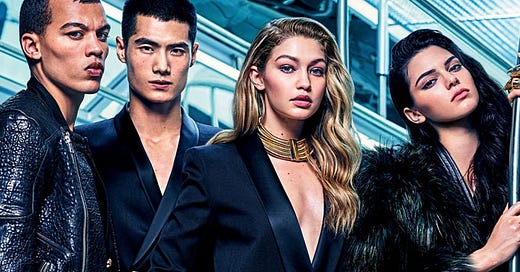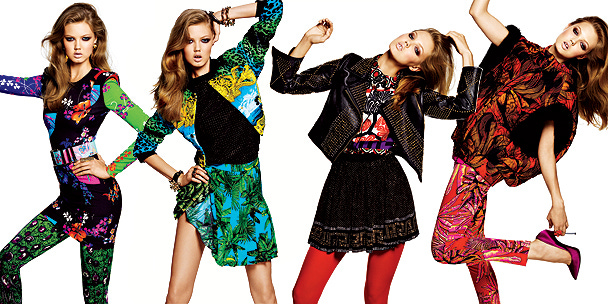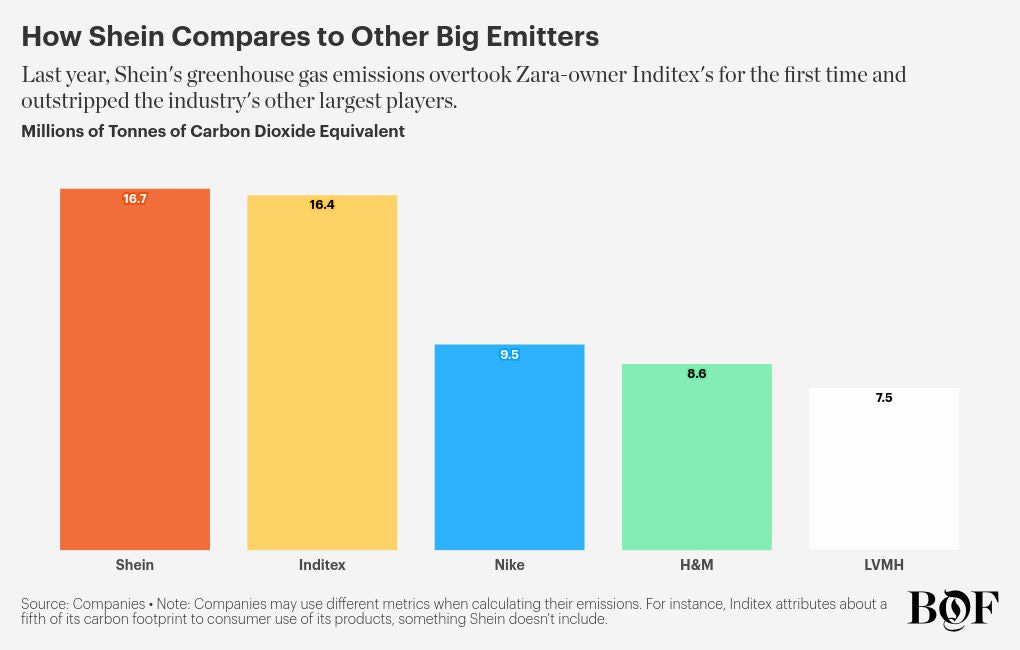20 Years of H&M Designer Collaborations
Do luxury fashion and fast fashion need each other to survive?
Celebrating 20 Years of H&M designer collaborations. Woopdy fucking do.
In all honesty it just annoys me when publications like Business of Fashion and Vogue even cover stories to do with fast fashion. High street fashion, I understand, is part of the general zeitgeist which helps these publications galvanise a wider audience and helps them feel included in the world of fashion and Vogue. But there’s a line which should be drawn, and we definitely don’t need to be celebrating anything H&M do, nor giving them the air time at all. I get it, at the end of the day it probably comes down to ad spend from these types of brands, for fucks sake, even Amazon Fashion were the sponsor of the CFDA awards.
If anything I would accept them having some actual critical thoughts about the model on the whole, especially as it includes so many luxury fashion names. It began with Karl Lagerfeld, the Chanel designer at the time, back in 2004. And since then we’ve seen it all including, unfortunately Stella McCartney (Although this perhaps did some good for the sustainable fashion and vegan fashion movement back then), Versace, Roberto Cavalli, Marni, Margiela, Marant, Erdem and the abhorrent Alexander Wang.
But why do H&M do the designer collaborations and why do the designers do them too? But why specifically is the H&M one so successful, in the era where collaborations have made brands and broke brands?
So here is the article I think someone at these publications should’ve written, from someone less qualified and more opinionated, who could care less about their ad money.
Firstly, H&M’s roots go back over 70 years, and have been on the high street in England for a very long time. I think it’s also on the subconscious of most people that they are Swedish and the Scandinavian design aesthetic, which doesn’t really run through the brand at all, but at least has a role to play in the perception of who H&M are - clean, friendly, environmentally aware and high quality. From all this, it leads people to think quality is prioritised, and a key pillar for the brand. I also believe this entire designer collab model does this too. It makes the consumers think, “well if Balmain, Karl Lagerfeld and Lanvin are all collaborating with H&M then they must also believe in the quality of their products right? otherwise they’d partner with someone else.” Nope.
The appeal I believe, is also broader than say that of Zara. Whilst Zara has a more Celine, YSL, The Kooples, Zadig & Voltaire aesthetic, H&M is less sharp and dynamic, softer and more approachable. It’s calm enough to appeal to the more conservative-dressers and those with simpler style, but also trendy enough to appeal to a large younger audience.
H&M are quite possibly the best at marketing and the best green-washers in the world. As evidenced by countless consumer surveys which places them as the “most sustainable” brand on the high street, as well as many lawsuits against them for unsubstantiated “green claims”. From putting recycled labels on things which make you believe the garment is recycled (when it’s just the label), to the more or less useless recycle bins in store, which not only incentivise you to buy more stuff, they were also found to be dumping things in landfill in other countries.
Unfortunately, their 20th anniversary campaign culminates all of these things in one. They’ve partnered with resellers and Sellpy to grab pieces from the designer collabs over the years to resell to you again. Of course, they can brand this as part of their “close the loop” initiative to do with circular fashion. But it is worth remembering that they plan on doubling their business in the same time period we need them to reduce volume, production and emissions drastically.

What’s scary to me is this will further enhance all of the issues I’ve highlighted. It will help H&M overcome the greenwashing allegations and show yet again to the general public that they’re the leaders for circular fashion. It positions them at the high end of the high street and enforces their luxury fashion connections. And it is yet another thing that will make them a lot of money when it undoubtedly sells out.
Luxury fashion is going through what most people think is a hard time at the moment. With sales generally down across the board and share prices plummeting, do they need fast fashion at this point to help them recover? I’d argue that brands making a few billion quid will be absolutely fine making a bit less. maybe they should get H&M’s marketing department to help re-brand this as De-Growth?
The final note of all this is the recent comments from the H&M CEO stating they’re doubling down on their position of mid-market. They mean the middle of the fast fashion market, which no longer places them at the bottom since the emergence of Shein and the alike. The designer collab helps them float above the bottom of the barrel brands, and loosely align with, and pal-up with, the LVMH and Kering luxury brands. So I can’t help but feel we are gonna be seeing a lot more of these types of collaborations as H&M really try their best to market themselves as the best of the shitheap list of brands damaging the planet.








